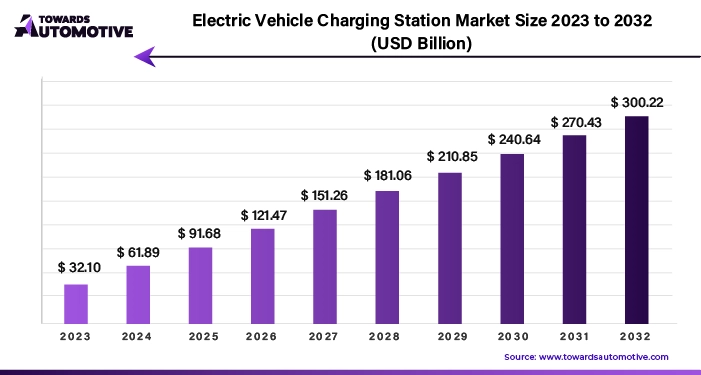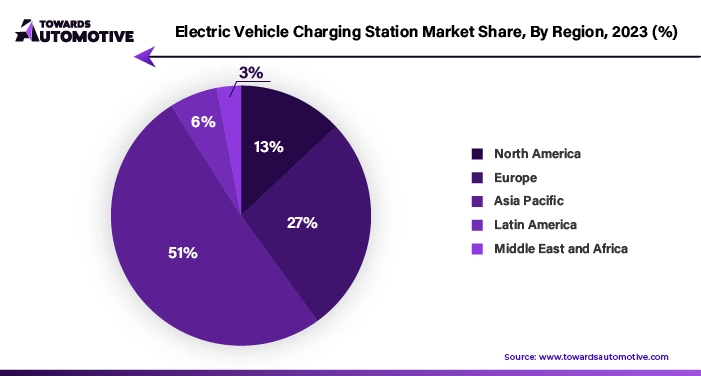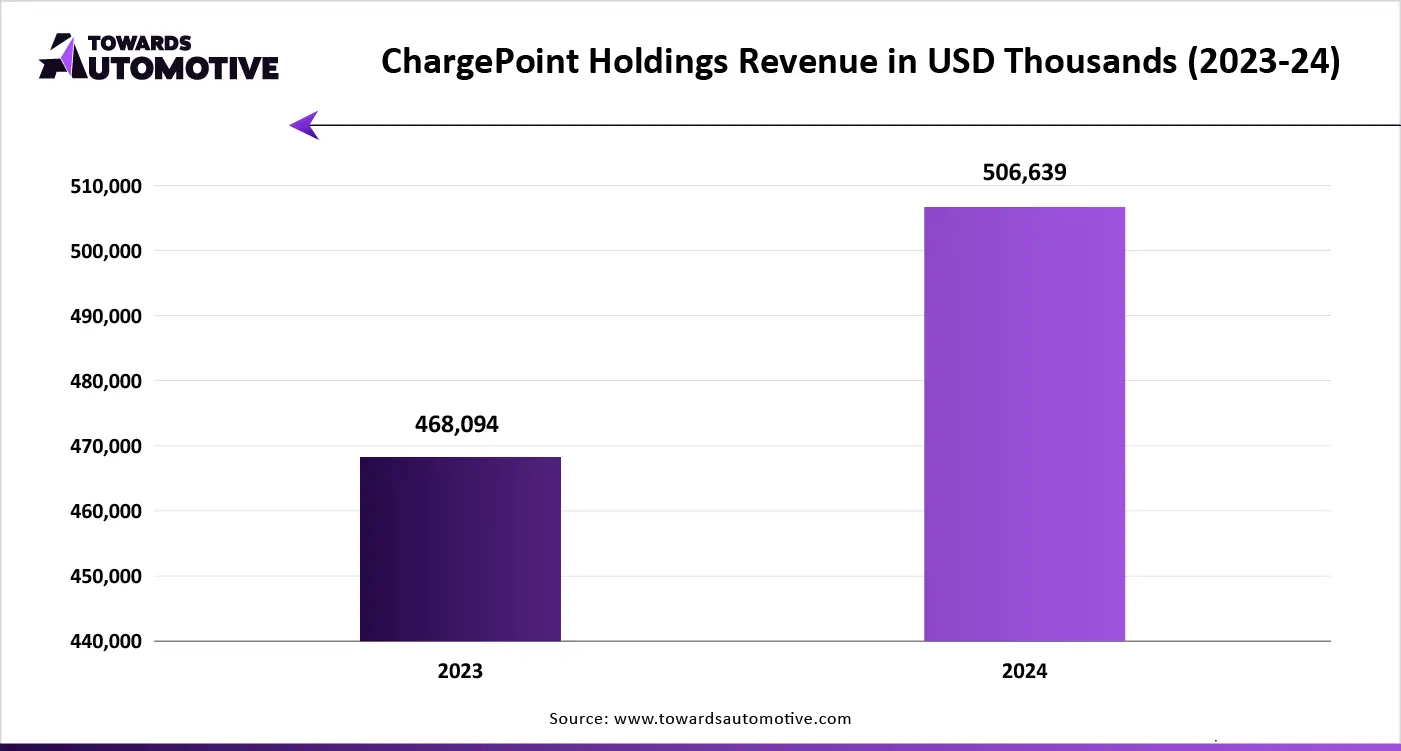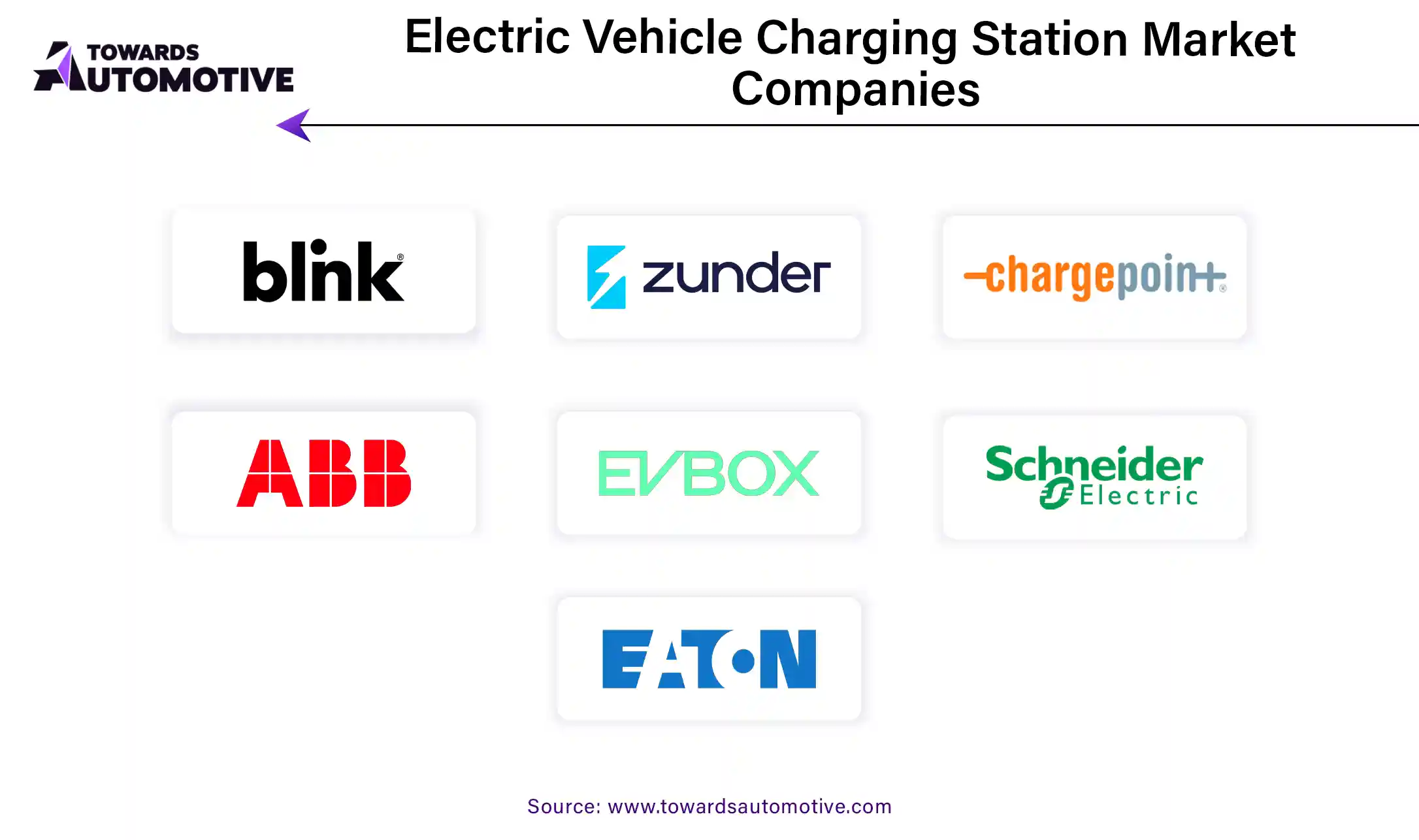October 2025
The electric vehicle charging station market is forecast to grow at a CAGR of 19.18%, from USD 45.59 billion in 2025 to USD 221.18 billion by 2034, over the forecast period from 2025 to 2034. The growing adoption of electric vehicles in Western nations to reduce vehicular emission coupled with numerous government initiatives aimed at developing the EV charging infrastructure has boosted the market expansion.
Additionally, rapid investment by startup companies to construct new EV charging stations along with technological advancements in the EV sector is playing a vital role in shaping the industrial landscape. The research and development activities related to wireless EV charging is expected to create ample growth opportunities for the market players in the years to come.

The electric vehicle charging station market is a prominent sector of the EV industry. This industry deals in deploying EV charging stations across the world. There are different types of EV charging stations deployed by this sector including AC charging station, DC charging station, wireless charging stations and some others. These charging stations supports numerous levels of charging consisting of level 1 charging, level 2 charging and level 3 charging. The end-user of this sector comprises of commercial EV charging stations and residential EV charging stations. This market is expected to rise significantly with the growth of the automotive sector around the globe.
The major trends in this market consists of partnerships, government initiatives and investments.
The DC charging segment dominated the market. The growing investment by EV charging providers to deploy fast chargers in developed areas has boosted the market expansion. Additionally, numerous advantages of DC charging stations including fast charging times, high-power capabilities, ideal for long trips, enhance efficiency and some others is expected to propel the growth of the electric vehicle charging station market.
The AC charging segment is expected to expand with the highest CAGR during the forecast period. The rising demand for cost-effective EV charging solutions has boosted the market growth. Also, various benefits of AC charging stations consisting of low installation cost, less maintenance, compatibility, easy installation and some others is expected to drive the growth of the electric vehicle charging station market.
The battery electric vehicle (BEV) segment led the market. The rising sales of EVs in different parts of the world has boosted the market expansion. Also, technological advancements in the EV manufacturing sector coupled with rapid investment by battery manufacturers to develop high-quality batteries is playing a vital role in shaping the industrial landscape. Moreover, numerous government initiatives aimed at adopting EVs along with increasing demand for affordable BEVs in developing nations is expected to boost the growth of the electric vehicle charging station market.
The plug-in hybrid vehicle (PHEV) segment is expected to grow with a notable CAGR during the forecast period. The growing adoption of PHEVs in developed nations with an aim to reduce vehicular emission has boosted the market growth. Additionally, rapid investment by automotive companies to develop PHEVs for providing superior mileage is contributing to the industrial expansion. Moreover, technological advancements in hybrid powertrains is expected to propel the growth of the electric vehicle charging station market.

Asia Pacific led the electric vehicle charging station market. The rising demand for affordable EVs in several countries such as India, Vietnam, China, Indonesia and some others has driven the market expansion. Additionally, numerous government initiatives aimed at developing the EV charging infrastructure coupled with rapid investment by EV companies to deploy fast-charging stations is playing a vital role in shaping the industrial landscape. Moreover, the presence of numerous market players such as Denso Corporation, Toshiba Corporation, BYD, StarCharge and some others is expected to boost the growth of the electric vehicle charging station market in this region.
North America is expected to grow with a significant CAGR during the forecast period. The growing adoption of electric vehicles in the U.S. and Canada to reduce vehicular emission has boosted the market growth. Also, rapid investment by government for developing the EV charging stations along with rising consumer awareness to reduce C02 emission is crucial for the industrial development. Moreover, the presence of various market players such as Tesla, ChargePoint, Inc., Qualcomm Technologies, Inc. and some others is expected to propel the growth of the electric vehicle charging station market in this region.
The electric vehicle charging station market is a highly competitive industry with the presence of several dominating players. Some of the prominent companies in this industry consists of Blink Charging Co. (U.S.), EO Charging (U.K.), Siemens AG (Germany), Eaton (Ireland), ChargePoint Inc. (U.S.), ABB (Switzerland), Schneider Electric (France), EVBox (Netherlands), Webasto Group (Germany), Tesla (U.S.), and some others. These companies are constantly engaged in deploying EV charging stations and adopting numerous strategies such as launches, collaborations, partnerships, joint ventures, business expansions, acquisitions, and some others to maintain their dominance in this industry.


By Level of Charging
By Charging Station Type
By Power Output
By Supplier Type
By Vehicle Type
By Installation Type
By Connector Type
By Application
By Mounting Type
By Charging Service
By End User
By Region
According to market projections, the electric vehicle finance industry is expected to grow from USD 53.85 billion in 2024 to USD 902.90 billion by 203...
October 2025
October 2025
October 2025
October 2025
We offer automotive expertise for market projections and customizable research, adaptable to diverse strategic approaches.
Contact Us